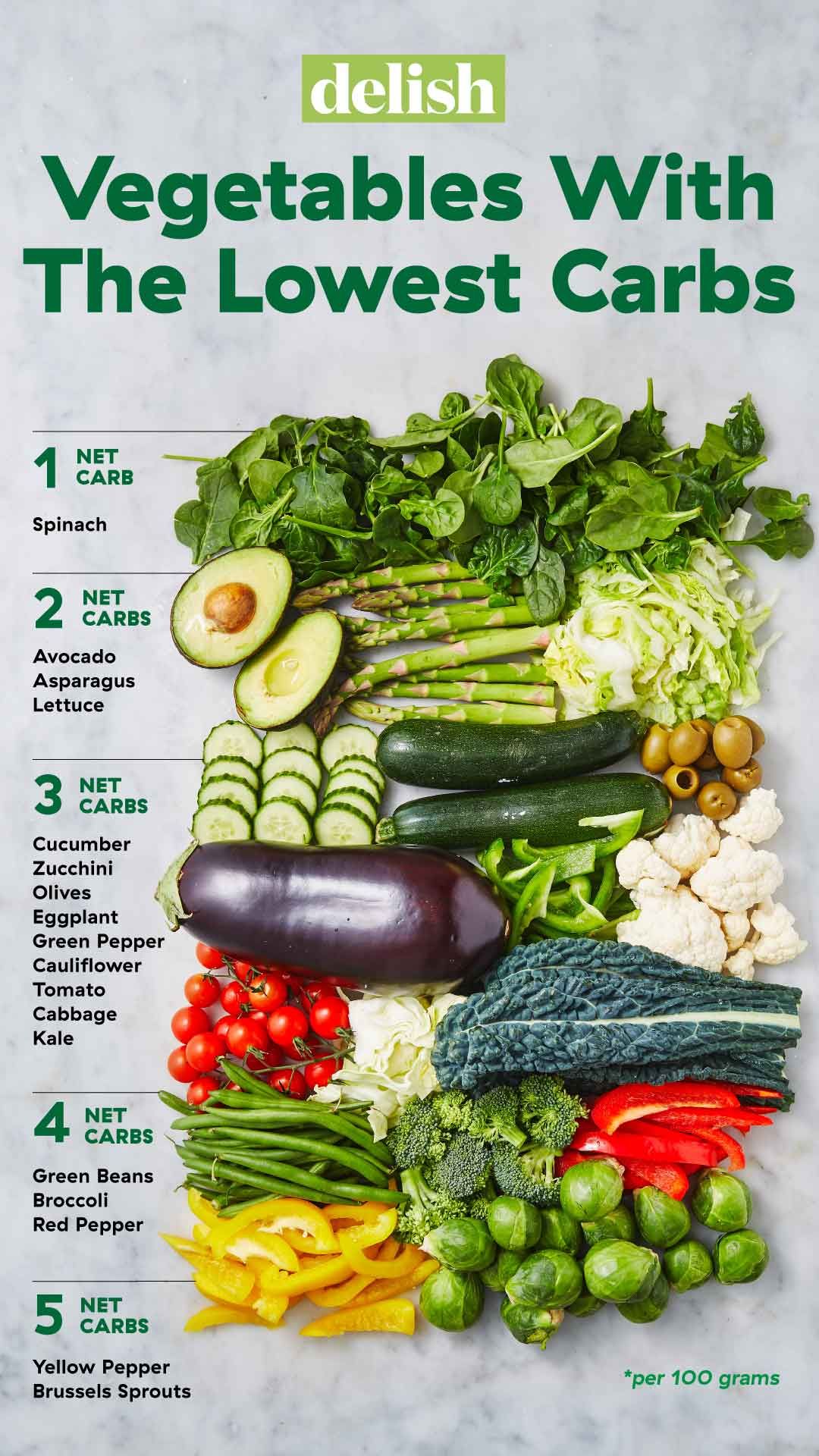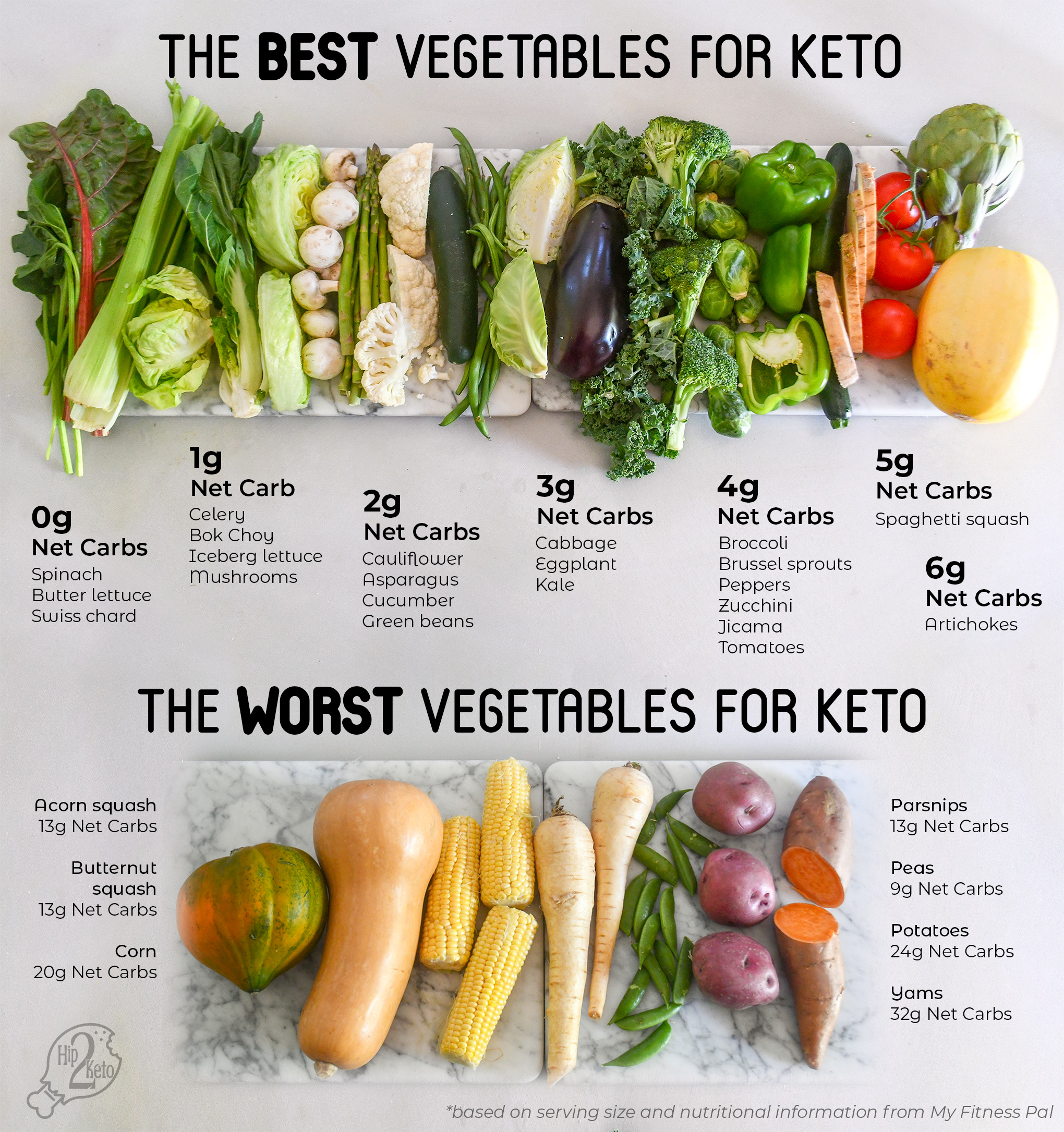Are you looking to cut carbs but still want to enjoy fresh, crunchy veggies? Finding vegetables with little to no carbs can feel tricky, especially when you want to keep your meals tasty and satisfying.
Imagine knowing exactly which veggies won’t spike your carb count and can easily fit into your daily diet. This guide will help you discover those low-carb veggies that support your goals without sacrificing flavor. Keep reading, because what you learn here could change the way you eat—and feel—every day.

Credit: amandascookin.com
Zero-carb Vegetables
Zero-carb vegetables are rare but important for some diets. People following strict low-carb or ketogenic diets want to avoid carbs entirely. Knowing which veggies have zero carbs helps in meal planning. These vegetables provide vitamins and minerals without adding carbs.
Not many vegetables have absolutely no carbs. Most contain small amounts of carbohydrates. Still, some come very close to zero, making them good choices for zero-carb meals.
Myth Vs Reality
Many believe all vegetables have zero carbs. This is not true. Most vegetables have at least a tiny amount of carbohydrates. Even leafy greens have some carbs. The reality is that zero-carb vegetables are limited. Some foods labeled as zero-carb may have trace carbs. These amounts are usually very low and often rounded down.
Understanding the real carb content helps avoid confusion. It also helps people stick to their diet goals more easily.
Common Zero-carb Veggies
Certain vegetables have nearly no carbs. Examples include celery, cucumber, and lettuce. These veggies have very low net carbs, often less than one gram per serving. They add crunch and freshness without raising carb counts. Radishes and spinach also contain minimal carbs. These are great for salads and snacks. Choosing these vegetables supports a zero-carb or very low-carb lifestyle.
Very Low-carb Vegetables
Very low-carb vegetables fit well in many diets. They provide important vitamins and minerals. These veggies help keep carbs low while adding color and flavor to meals.
Choosing very low-carb vegetables supports weight management and stable blood sugar. They often contain fiber, which helps digestion. Including these vegetables makes meals healthy and satisfying.
Leafy Greens
Leafy greens are some of the lowest-carb vegetables available. Spinach, kale, and lettuce have very few carbs. They contain many nutrients like vitamin A, C, and iron.
These greens work well in salads, smoothies, or cooked dishes. Their mild flavors mix easily with other foods. Leafy greens add bulk without extra carbs.
Cruciferous Choices
Cruciferous vegetables include broccoli, cauliflower, and cabbage. They have low carb counts and are rich in fiber. These veggies support good digestion and overall health.
Steamed, roasted, or raw, cruciferous vegetables add crunch and nutrition. They contain antioxidants that protect the body. These choices are perfect for low-carb meal plans.
Other Low-carb Options
Zucchini, cucumbers, and celery are also very low in carbs. These vegetables can be eaten raw or cooked. They add freshness and texture to any dish.
These options provide hydration due to their high water content. They fit well in soups, salads, and snacks. Choosing these veggies helps keep carb intake minimal.
Benefits Of Low-carb Veggies
Low-carb vegetables offer many health benefits. They provide essential nutrients with fewer calories and carbs. Eating these veggies supports a healthy lifestyle without sacrificing flavor or variety.
These vegetables are rich in vitamins, minerals, and fiber. They help keep the body strong and energized. Including low-carb veggies in your meals can improve overall health and well-being.
Weight Management
Low-carb vegetables help control calorie intake. They fill you up without adding many calories. This helps reduce overeating and supports weight loss. Their high fiber content also boosts fullness and reduces hunger.
Blood Sugar Control
Veggies with no carbs cause little impact on blood sugar. They prevent spikes and crashes after meals. This keeps energy levels steady throughout the day. Eating these vegetables helps manage and prevent diabetes.
Digestive Health
Fiber in low-carb vegetables supports good digestion. It keeps the digestive system clean and regular. Fiber also feeds healthy gut bacteria. This improves gut health and reduces digestive problems.

Credit: www.fammed.wisc.edu
Incorporating Low-carb Veggies
Incorporating low-carb veggies into your daily meals is a smart way to stay healthy. These vegetables provide essential nutrients without extra carbs. They help control blood sugar and support weight management. Eating them often keeps meals fresh and exciting. You can enjoy a variety of textures and flavors.
Meal Planning Tips
Start by choosing veggies with zero or very low carbs. Examples include spinach, cucumbers, and lettuce. Plan meals around these veggies to keep carbs low. Use them as main ingredients or side dishes. Prepare a weekly list to simplify shopping. This saves time and reduces stress. Make sure to balance your plate with protein and healthy fats.
Snack Ideas
Low-carb veggies make excellent snacks. Try carrot sticks, celery, or bell pepper slices. Pair them with hummus or a low-carb dip. Keep pre-cut veggies in the fridge for quick snacks. They help curb hunger between meals. Crunchy and fresh snacks satisfy cravings without extra carbs.
Cooking Techniques
Steaming preserves nutrients and keeps veggies tender. Roasting adds flavor without extra carbs. Use olive oil or butter in small amounts. Stir-frying with garlic or herbs enhances taste. Avoid heavy sauces or breading. Simple cooking brings out natural veggie flavors well.
Common Mistakes To Avoid
Choosing veggies with no carbs can be tricky. Many people make mistakes that affect their diet goals. Knowing these errors helps you stay on track. Avoiding common pitfalls keeps your meals healthy and balanced.
Hidden Carbs In Veggies
Not all vegetables are carb-free. Some have hidden carbs that add up quickly. For example, onions and tomatoes contain more carbs than you think. Reading nutrition labels is important. Watch out for added sugars in canned or packaged veggies. Fresh, raw vegetables usually have fewer carbs.
Overeating Starchy Vegetables
Starchy vegetables like potatoes and corn have more carbs. Eating large portions can increase your carb intake. These veggies are healthy but not carb-free. Control your serving size to avoid consuming too many carbs. Balance starchy vegetables with low-carb options for best results.

Credit: hip2keto.com
Shopping Guide For Low-carb Veggies
Choosing the right low-carb vegetables can make your diet easier and tastier. This guide helps you shop smart for veggies that fit your carb goals. Freshness, quality, and type matter most when picking low-carb options. Keep these tips in mind to enjoy crisp, healthy veggies every time.
Seasonal Picks
Seasonal vegetables offer the best flavor and value. They grow naturally in certain months and cost less. Summer brings zucchini, cucumbers, and green beans. Winter offers kale, spinach, and broccoli. Eating seasonally means fresher produce and fewer pesticides. It also supports local farmers and reduces food miles.
Organic Vs Conventional
Organic vegetables grow without synthetic pesticides or fertilizers. They often have fewer chemicals and may taste better. Conventional veggies might be cheaper and more available year-round. Washing all vegetables well reduces pesticide residues. Choose organic for leafy greens and root vegetables. These tend to absorb more pesticides than others.
Conclusion
Veggies with no carbs fit well in healthy eating plans. They add crunch and color to any meal. You can enjoy them raw or cooked. These veggies help keep blood sugar stable. They also support weight control and digestion. Try including them in salads, snacks, or side dishes.
Eating low-carb veggies is simple and tasty. Start adding these veggies to your daily diet today. Your body will thank you for it.



